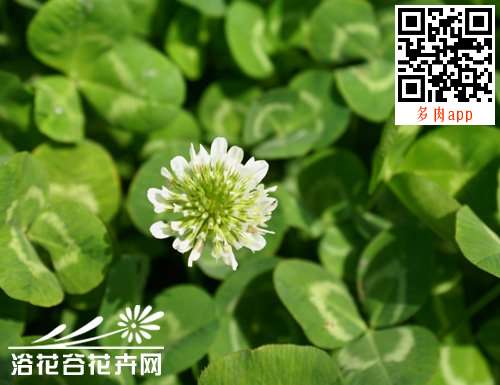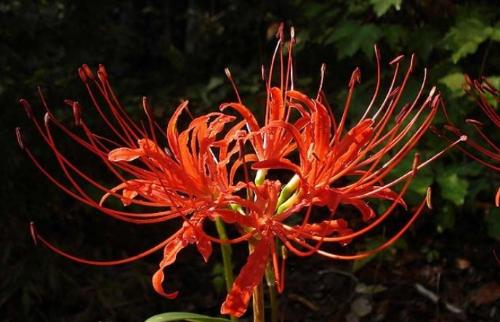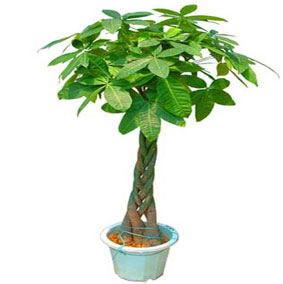Planting techniques of clover
Clover cold resistance strong, the temperature dropped to 0 degrees Celsius when part of the old leaves withered, leaflets on the taproot close to the ground, stop growing, but still maintain green. The green period is long. It is not strict with soil requirements, can adapt to various soil types, and grows well on acidic soil.
Clover likes warm, sunny, well-drained environmental conditions. It grows slowly under drought conditions, and some die in high temperature seasons. It is resistant to pruning and trampling, and has strong regeneration ability. It can grow new leaflets within 10 days after pruning. After high intensity trampling or crushing, it can recover in 3~ 5 days. In the case of strong shade, it is easy to overgrow, resulting in poor growth. Strong resistance to harmful gas pollution and pests.
Trifoliate seed is small, want careful preparation before sowing. First of all, deep ploughing should be carried out to remove tree stumps, construction waste, grass roots and other debris. The lawn of the courtyard is often planted after the building is completed. Therefore, the site has cement, sand, mortar, bricks, tiles, decorative materials waste, etc., these sundries must be removed and backfilled with garden soil. Second, soil treatment should be carried out to eliminate weeds. After deep ploughing and cleaning, most of the roots and vegetative propagules have been removed, but the weed seeds and some vegetative bodies are still in the soil. Under suitable conditions, the weed seeds will germinate and harm the lawn formation. Therefore, soil treatment should be carried out on the terrace bed. If the period is not tight, water can be watered after the weeds grow out to kill life control. If the time is tight, soil fumigation combined with soil disinfection can be used to treat weed seeds. White clover seedlings grow slowly and are vulnerable to weeds. Soil treatment is very important. Third, shallow tillage should be carried out, and organic fertilizer or compound fertilizer should be applied in combination with shallow tillage. Fourth, harrow grinding, fine soil preparation, so that the flat bed smooth, to create conditions for sowing.

Trifoliate seed is small, want careful preparation before sowing. First of all, deep ploughing should be carried out to remove tree stumps, construction waste, grass roots and other debris. The lawn of the courtyard is often planted after the building is completed. Therefore, the site has cement, sand, mortar, bricks, tiles, decorative materials waste, etc., these sundries must be removed and backfilled with garden soil. Second, soil treatment should be carried out to eliminate weeds. After deep ploughing and cleaning, most of the roots and vegetative propagules have been removed, but the weed seeds and some vegetative bodies are still in the soil. When the conditions are suitable, the weed seeds will germinate again and harm the lawn formation. Therefore, soil treatment should be carried out on the terrace bed. If the construction period is not tight, it can be watered and weeds grow out to kill and control. If the construction period is tight, soil fumigation combined with soil disinfection can be used for weed seed treatment. White clover seedlings grow slowly and are vulnerable to weed damage. Soil treatment is very important. The third is to carry out shallow tillage, combined with shallow tillage into organic fertilizer or compound fertilizer. Fourth, harrow grinding, fine soil preparation, so that the flat bed smooth and smooth, to create conditions for sowing. Introduction to Clover Planting Methods
There are many kinds of plants in nature, and clover is only one of many. Clover must not be unfamiliar to everyone, it is the most common plant species around us. So how much do you know about clover? What does clover mean? What are the ecological habits of clover? And what are the cultivation methods of clover? The following is a brief introduction by Xiaobian, hoping to help everyone.
Introduction to the meaning of clover
Clover is a short-term perennial herb with a growth period of up to 5 years, short taproot, developed lateral roots and fibrous roots. Stems creeping, slightly ascending distally, rooting at nodes, glabrous throughout. Straight-rooted, roots have symbiotic characteristics with rhizobia, root tillering ability and regeneration ability are strong. Branches many, creeping growth, internode landing that is, root, and sprout new buds. Compound leaves, trifoliolate, leaflets obovate or obcordate, base cuneate, apex obtuse or retuse, margin serrulate, leaf surface center with "V"-shaped white halo, stipules elliptic, clasping stems. Flowers in summer and autumn, capitate racemes, globose, pedicel long, white, occasionally pale red. Side flowering, side seed, seed maturity is not the same, the seed is small. The meaning of clover In Australia and Canada, clover plants are weeds and must be cut off. In China, different numbers of clovers have different flower languages, such as three pieces representing hope, etc. Clover (one leaf): stands for prayer. Clover (two leaves): represents hope. Clover (clover): represents love. Clover (four leaves): represents happiness, sincere love. Ecological Habits of Clover
Clover cold resistance strong, temperature dropped to 0℃ when part of the old leaves withered, leaflets on the taproot close to the ground, stop growing, but still maintain green. The green period is long. It is not strict with soil requirements, can adapt to various soil types, and grows well on acidic soil. Enjoy warm, sunny, well-drained environmental conditions. It grows slowly under drought conditions, and some die in high temperature seasons. Resistant to pruning, trampling resistance, regeneration ability, pruning after 10 days can grow new leaflets. After high intensity trampling or crushing, it can be recovered in 3~5 days. Strong resistance to harmful gas pollution and pest disease.
How to grow clover
Clover planting method soil: clover seeds are small, seedlings are thin and weak, seedling growth is extremely slow, deep ploughing is needed before planting, leveling the ground, crushing the soil, making the seed layer loose and flat. Sowing: The best sowing time of clover is spring and autumn, spring sowing can be from the end of March to the end of April, and the temperature can be sown stably above 15℃. Autumn sowing is generally from mid to late September. Before sowing, clover needs to be soaked in water, 1.5kg of water per kg of seeds, 1g of ammonium molybdate for 12 hours, 5- 10kg of calcium magnesium phosphate and 5- 10kg of fine soil or yellow sand for sowing. Fertilization: clover is a leguminous plant, its own nitrogen fixation capacity, but the seedling rhizobia has not yet been generated, should supplement a small amount of nitrogen, in order to facilitate strong seedlings, increased phosphorus, potassium fertilizer has a very good effect on yield. When the clover grows up, it only needs to supplement phosphorus and potassium fertilizer. Maintenance: Clover lawn growing for more than 2 years, tight soil layer, poor air permeability, in spring and autumn before returning green and before regeneration after grazing and mowing, to rake soil loosening, and combined with loosening fertilizer, in order to facilitate the growth and development of new buds and roots. Clover on soil moisture requirements are higher, there are irrigation conditions, in the soil drought, or combined with topdressing irrigation. Diseases and pests: clover disease less, but harvest is not timely, sometimes brown spot disease, powdery mildew occurs, can be cut first use, and then use bordeaux mixture, stone sulfur mixture or carbendazim control.
- Prev

Culture methods and matters needing attention of Lycoris radiata
Many members of the family Amaryllidaceae love warm climates, so they are suitable for flat cultivation and are suitable for flat cultivation. The suitable growth temperature of Lycoris radiata and orchid is between + 5 degrees Celsius and + 5 degrees Celsius, which is more suitable for planting in the north.
- Next

The sowing method of the rich tree
The rich tree is called melon chestnut, Malaba chestnut, goose palm money. It is the evergreen little Qiao of Gossypiaceae. It is native to Costa Rica, Australia and some small islands in the Pacific Ocean of Latin America, and is also distributed in the tropical areas of southern China. Wealth trees are very popular potted plants, and most flower lovers do not know that wealth trees can be sown.
Related
- Fuxing push coffee new agricultural production and marketing class: lack of small-scale processing plants
- Jujube rice field leisure farm deep ploughing Yilan for five years to create a space for organic food and play
- Nongyu Farm-A trial of organic papaya for brave women with advanced technology
- Four points for attention in the prevention and control of diseases and insect pests of edible fungi
- How to add nutrient solution to Edible Fungi
- Is there any good way to control edible fungus mites?
- Open Inoculation Technology of Edible Fungi
- Is there any clever way to use fertilizer for edible fungus in winter?
- What agents are used to kill the pathogens of edible fungi in the mushroom shed?
- Rapid drying of Edible Fungi

